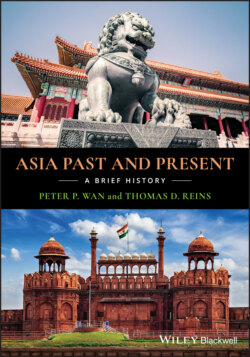Читать книгу Asia Past and Present - Peter P. Wan - Страница 50
Tang’s Capital Chang’an and the Silk Road
ОглавлениеThe Tang capital Chang’an (modern Xian) had been the capital of many dynasties, and now Emperor Tang Taizong would personally oversee its redesign on a grand master plan. Designed to impress, the capital was massive, orderly, and magnificent. It was seven times as large as ancient Rome or Constantinople. Surrounded by towering thick walls, it was laid out on a grid and divided into separate zones. The palace was located to the north of the city; to its immediate south were the government buildings; farther south were the residential and commercial zones. The city was shut down at night as soldiers patrolled the streets and enforced curfew. A million residents lived within the city, and another million lived in its suburbs. It was the world’s largest metropolis and a hub of international commercial and cultural exchanges.
It was the starting point of the Silk Road, which was first established in the Han Dynasty and was by now a well‐traveled thoroughfare that connected China with Central Asia, India, and Europe. People, goods, and ideas flowed along the road in both directions in great volume. Among Chang’an’s foreign residents were 30,000 foreign merchants, envoys, students, and monks, who were Persians, Arabs, Jews, and Indians. They brought all the major religions of the world here, including Buddhism, Zoroastrianism, Islam, Judaism, and early Christianity, and established their own houses of worship. Foreign merchants had separate sections where they lived, did business, and worshiped their gods in their own temples. Life in Chang’an was cosmopolitan, sophisticated, worldly, and upbeat.
